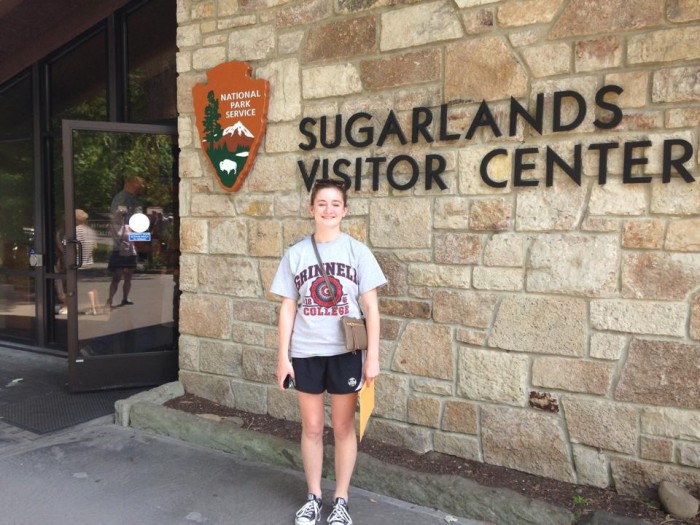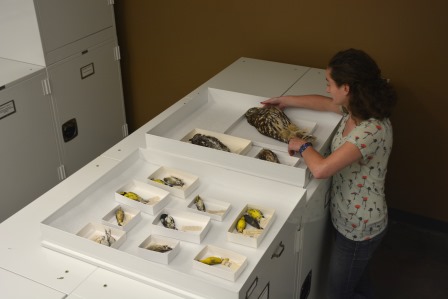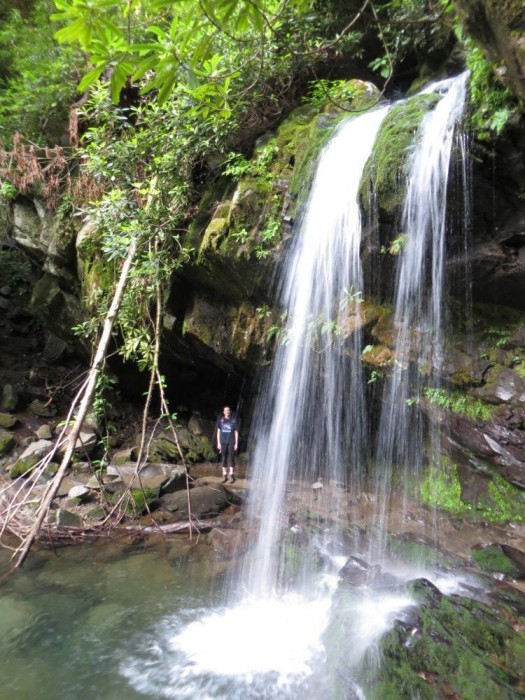
by Lauren Frankel, Grinnell College freshman
I don’t think many others can say they skipped their high school graduation and prom to intern with the National Park Service the summer before they started college. My name is Lauren Frankel, and I am so happy to say through the Mosaics in Science program, funded by the Geological Society of America and the NPS, I was the Natural History Collections Assistant. And yes, interning at the Smokies was worth missing the last month of high school! I’m currently at Grinnell College in Grinnell, Iowa intending to major in biology and concentrate in environmental studies.
I had previously interned at the American Museum of Natural History’s mammalogy department for a year. At such large museums, usually only 1% of specimens are on display. Many people don’t know that besides being used in exhibits to educate the public on natural history, museum collections document the biodiversity of a place and time. Collections can also be used to safeguard type specimens, the original specimen used to describe and name a species.
This summer, I discovered that park scientists along with partner organization Discover Life in America have been participating in the All Taxa Biodiversity Inventory (ATBI) since 1997 to document all life in the Smokies, the first effort of its kind. They are currently at 18,545 species known with 8,095 new to the park since ATBI’s inception and 951 new to science. When ATBI was initiated, only about 8,000 species in the park had been inventoried out of an estimated 100,000.
As scientists keep collecting, documenting, and describing species in the park, the natural history collections here have grown considerably. The collections house over 200 geology specimens and 235,000 biology specimens. Unfortunately, there is a large backlog of specimens that need to be catalogued or rehoused due to increased collecting in the past ten years from ATBI. My job was to improve collections conditions and work on the backlog. Some of the projects I had included taking inventory, accessioning (adding to museum collections) and reorganizing birds and lichens, and labeling wet specimens.

I often had the chance to shadow scientists in the park. I was able to work with the entomologist, botanist, and the fisheries crew in addition to visiting bat researchers from the University of Tennessee, Knoxville. Getting out into the field was a treat after long days working inside!
Being exposed to the diversity of jobs available at the National Park Service before I even started college has opened my career interests considerably. As part of the Mosaics program, I also had a week-long career workshop at the Department of the Interior in Washington, D.C. I really enjoyed working in the natural history collections this summer, but I also loved doing field work with scientists. Netting bats at midnight off Parsons Branch Road was awesome! (However, driving back to Gatlinburg at 2 AM on the Dragon with one headlight out was not as awesome.)
Moving eleven hours away from my home in New Jersey and living by myself was a bit daunting at first, but I’m so delighted to say I had the time of my life! Working four ten-hour days allowed me to have three day weekends to explore the park. I hiked over 130 miles this summer, including all five trails up Mt. LeConte. I relished every moment, from swimming at Midnight Hole to volunteering for the synchronous fireflies event, and can’t wait until I can go back to the Smokies!

Friends of the Smokies thanks Lauren Frankel and Qiuandra Taylor for sharing their experiences as interns with Great Smoky Mountains National Park. Organizations like the Student Conservation Association (SCA) and Mosaics in Science provide pathways to internships with public lands agencies. Youth interns gain valuable experience that they may carry forward into careers with the National Park Service, the US Forest Service, US Fish and Wildlife or many other state and local agencies. In turn, they provide important seasonal assistance to park visitors and staff. For another perspective on youth internships, visit the Denali National Park blog.
